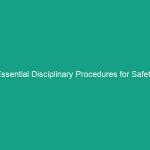Introduction
In the realm of Workplace Safety, the importance of protective equipment cannot be overstated. Among the various types of Personal Protective Equipment (PPE), safety gloves serve as a critical line of defense against numerous Hazards. Whether in construction, healthcare, or manufacturing, the correct selection and use of Safety gloves play an essential role in ensuring that employees remain safe and healthy while performing their duties. The primary goal of this article is to provide comprehensive guidelines that will enable employers and employees to navigate the complexities associated with the correct selection and use of Safety gloves.
Regulatory Frameworks Governing Safety Gloves
Understanding the regulatory frameworks that govern safety gloves is crucial for compliance and safety. Various organizations, such as the Occupational Safety and Health Administration (OSHA) in the United States, have established Standards that outline the requirements for PPE, including gloves.
osha Standards and Compliance
OSHA Regulations mandate that employers must provide appropriate PPE to their employees at no cost. This includes ensuring that the gloves selected for use meet specific performance standards. Employers must conduct a hazard assessment to determine the right type of gloves needed based on the identified risks. Failure to comply with these regulations can result in severe penalties and compromised worker safety.
EN and ISO Standards
In addition to OSHA, international standards such as EN (European Norm) and ISO (International Organization for Standardization) also govern PPE. These standards categorize gloves based on their intended use, performance levels, and testing methods. For instance, EN 388 focuses on mechanical risks, while EN 374 addresses chemical and biological Hazards. Understanding these standards is essential for the correct selection and use of safety gloves, ensuring that they provide adequate protection against specific risks.
Best Practices for Selecting Safety Gloves
Selecting the right safety gloves involves more than simply choosing the most expensive or most popular option. A thorough understanding of the workplace hazards and the specific requirements of each task is essential.
Identify the Hazards
The first step in the correct selection and use of safety gloves is to conduct a comprehensive hazard assessment. This assessment should identify any potential risks associated with the work Environment, including chemical exposure, cuts, abrasions, thermal hazards, and biological risks. Each of these hazards may require a different type of glove material and design.
Understand Glove Material Properties
Gloves are made from various materials, each offering different levels of protection. For instance, latex gloves are often used in medical settings due to their flexibility and sensitivity, but they might not provide adequate protection against chemicals. Nitrile gloves, on the other hand, are chemical-resistant and suitable for handling hazardous materials. Additionally, leather gloves offer excellent cut resistance but may not be suitable for chemical handling. It is essential to match the glove material with the specific hazards identified in the workplace.
Fit and Comfort
The fit and comfort of safety gloves are critical factors that often get overlooked. Gloves that are too tight can cause fatigue and reduce dexterity, while gloves that are too loose may compromise grip and control. When selecting gloves, ensure that they fit snugly at the wrist and fingertips without being restrictive. Conducting a fit test can help employees find the right size and style for their unique needs.
Training and Awareness
Even with the correct selection of safety gloves, proper Training is essential for ensuring their effective use. Employees should be trained on how to wear, adjust, and remove gloves correctly. Additionally, they should be made aware of the limitations of the gloves they are using. For example, gloves may degrade when exposed to certain chemicals, and employees should be educated on when to replace them. Regular training sessions can reinforce this knowledge and improve overall safety compliance.
Case Studies: Real-World Applications of Safety Gloves
Examining real-world applications of safety gloves can provide valuable insights into their effectiveness and the consequences of improper use. Here are a few case studies that highlight the importance of adhering to the correct selection and use of safety gloves.
Case Study 1: Chemical Exposure in the Lab
In a laboratory setting, a technician failed to use the correct nitrile gloves while handling corrosive chemicals, resulting in severe skin Burns. An investigation revealed that the technician had not been trained adequately on the importance of using gloves suited for chemical resistance. This incident emphasized the need for rigorous training and adherence to safety protocols regarding the correct selection and use of safety gloves in high-risk environments.
Case Study 2: Construction Site Injuries
On a construction site, workers were provided with basic leather gloves for handling sharp materials. However, several incidents of cuts and punctures were reported, leading to injuries that required medical attention. An audit revealed that the gloves did not meet the necessary safety standards for the tasks being performed. This case underscores the critical importance of conducting thorough hazard assessments and selecting gloves that meet the specific demands of the work being done.
Challenges in the Use of Safety Gloves
While safety gloves are essential for protecting workers, several challenges can arise with their selection and use. Understanding these challenges is crucial for developing effective strategies to mitigate risk.
Common Misconceptions
One of the most common misconceptions about safety gloves is that they are infallible. Many employees mistakenly believe that wearing gloves eliminates all risks associated with their tasks. In reality, gloves have limitations; for instance, they may not offer complete protection against all chemicals or hazards. It is vital to educate workers about these limitations to ensure they remain vigilant and follow safety protocols.
Environmental Considerations
Another challenge is the environmental impact of disposable gloves. The widespread use of single-use gloves, especially during the pandemic, has led to increased waste and environmental concerns. Organizations must weigh the protective Benefits of gloves against their environmental footprint and consider implementing recycling programs or investing in eco-friendly alternatives.
Compliance and Accountability
Ensuring compliance with safety glove regulations can also be challenging. Employers may struggle to stay updated with the latest regulations and standards, leading to unintentional violations. Regular training, audits, and updates on industry standards are essential for maintaining compliance and ensuring that all employees are accountable for their safety practices.
Future Trends in Safety Glove Technology
The world of safety gloves is continually evolving, with advancements in technology leading to improved designs and materials. Staying informed about these trends can help organizations select the best protective gear for their workers.
Smart Gloves
One exciting trend is the development of smart gloves equipped with sensors that can monitor hand movements, detect hazardous substances, and even provide real-time feedback on safety compliance. This technology has the potential to revolutionize Workplace Safety by providing instant alerts when workers are exposed to dangerous conditions.
Biodegradable Materials
As environmental concerns grow, manufacturers are increasingly exploring biodegradable materials for glove production. These eco-friendly gloves can offer the necessary protection while reducing the environmental impact associated with traditional disposable gloves. Organizations that prioritize Sustainability may benefit from adopting these innovative solutions.
Enhanced Grip and Dexterity
Advancements in material science are also leading to the development of gloves that offer enhanced grip and dexterity without sacrificing protection. Gloves with textured surfaces and ergonomic designs can improve handling and reduce the risk of accidents, making them ideal for various industries.
Conclusion
In conclusion, the correct selection and use of safety gloves are vital components of Workplace Health, safety, and environmental practices. By understanding regulatory frameworks, following Best Practices, staying informed about challenges, and embracing future trends, employers can significantly enhance their safety protocols. It is essential to prioritize training and awareness among employees to ensure that they understand the importance of proper glove selection and usage. Ultimately, a proactive approach to safety can lead to a safer and healthier work environment for all. We encourage organizations to review their current PPE policies and invest in the necessary training and resources to ensure the safety of their workforce.


